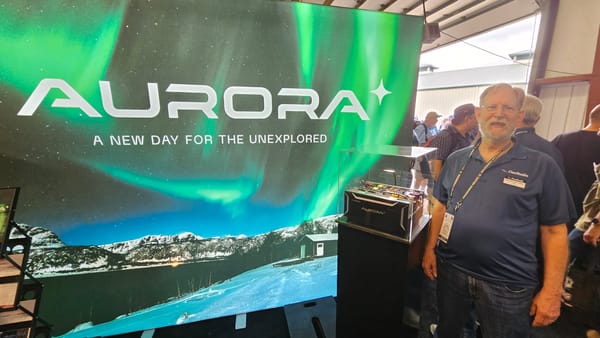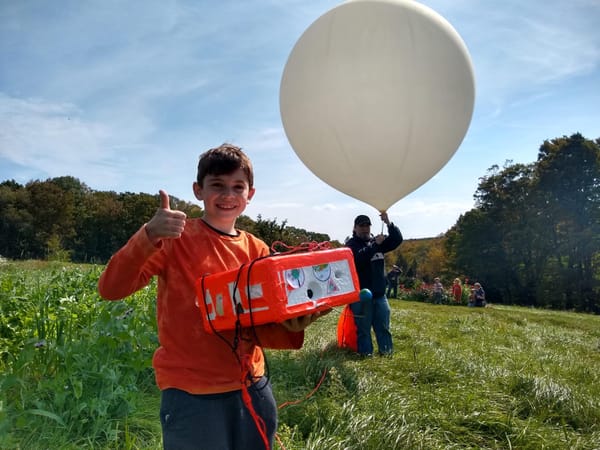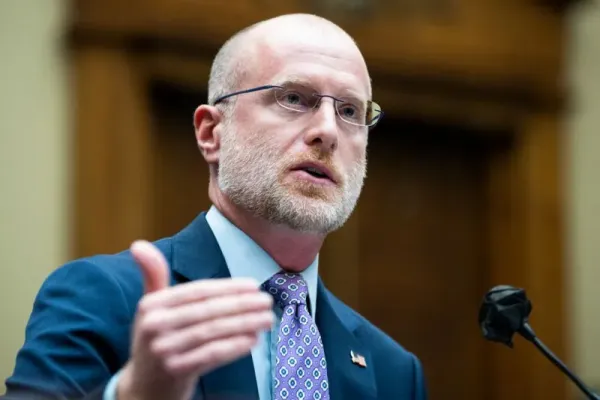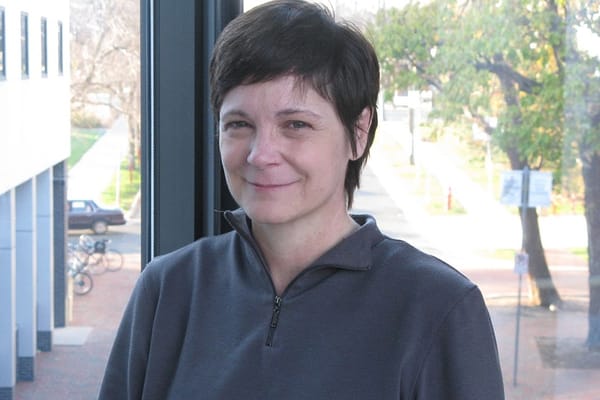What Is the Message to the FCC from Hams "In Re: Delete, Delete, Delete"?
What thousands of public comments reveal about amateur radio’s priorities—and how that insight can power long-term strategic planning.

When the FCC invited the public to help decide which rules to “Delete,” nearly 900 comments flooded in — nearly half from the amateur radio community. I analyzed every one. Here's what stood out:
- Hams overwhelmingly support the current license structure
- They want fewer operating constraints — not more
- They submitted far more specific, actionable ideas than expected
FCC Sends a Deregulatory Shockwave
On March 12, 2025, the FCC issued Public Notice GN Docket 25-133, announcing an open-ended invitation for the public to suggest which rules should be repealed, revised, or entirely deleted. It offered no specific proposals. Instead, it asked broad questions: Which regulations are outdated? Where do the costs outweigh the benefits? What rules block innovation or investment?
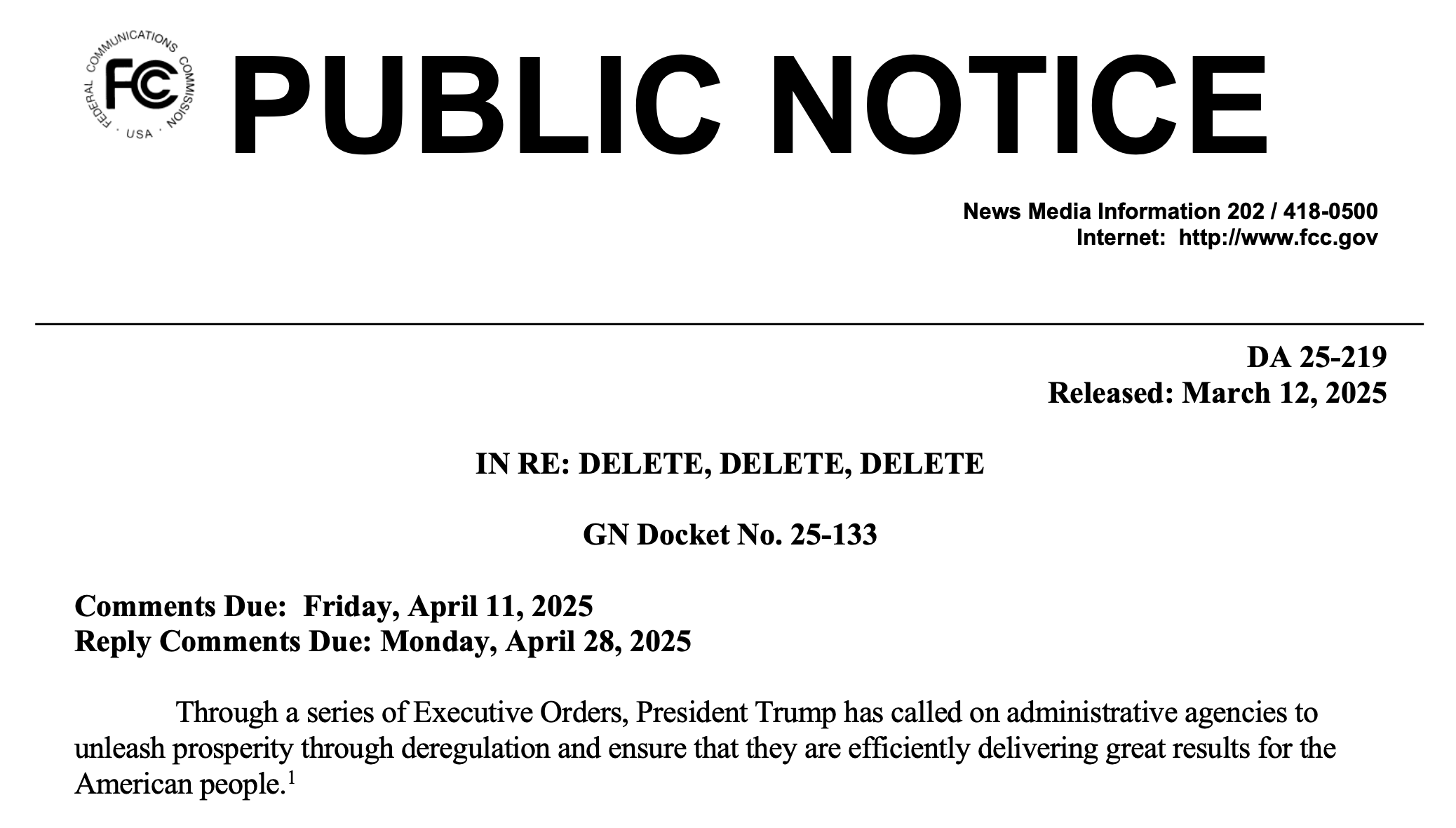
The FCC has just launched a sweeping deregulation initiative titled “In re: Delete, Delete, Delete.” Thanks to President Trump’s leadership, the FCC will help unleash prosperity through deregulation.
— Brendan Carr
Chairman, Federal Communications Commission
March 12, 2025 post to X
The entire body of FCC regulation is now on the table.
Over 30 days, nearly 900 filings poured into the FCC’s Electronic Comment Filing System (ECFS). Those filings broke down into 25,000 individual ideas or observations — distinct thought units I extracted, classified, and analyzed.
What emerged was more than a response to a government prompt. It was a crowdsourced snapshot of how the amateur radio community sees itself — its challenges, its aspirations, and what it believes must change to secure its future. The result is not just public comment data. It’s a rare and unfiltered blueprint of what matters most to hams right now.
This post delivers initial results of my analysis — and what I believe the FCC and the amateur radio community should take from it.
The Docket at a Glance
“Delete, Delete, Delete” — was not a traditional rulemaking proposal. The FCC didn’t put forward a specific plan. Instead, it asked the public to help identify which parts of its regulations are obsolete, burdensome, or in the way of progress.
The notice posed broad but pointed questions:
"Are there existing Commission rules for which the costs exceed the benefits? Are there rules that, if eliminated or modified, could result in greater benefits relative to the associated costs of the new regulatory framework?"
"Are there existing rules that have outlived their usefulness, for which there is no longer any (or only substantially diminished) need, or which otherwise give rise to harms in light of technological and marketplace developments?"
"[What] unnecessary rules may stand in the way of deployment, expansion, competition, and technological innovation in communications that the Commission is directed to advance?"
The FCC outlined a set of policy factors it will weigh in its analysis of recommendations, including the following:
- Cost-Benefit Considerations
- Effectiveness of the Rule
- Continued Usefulness of the Rule
- Barriers to Entry
- Changes in the Broader Regulatory Context
- Changes in the Governing Legal Framework
- Other Relevant Considerations
It was a rare — and unusually open-ended — invitation to shape the future of communications policy in the US.
A Flood of Rich, Unstructured Input
The public response was overwhelming. Nearly 900 filings poured into the FCC’s Electronic Comment Filing System (ECFS).
Total Submissions
And the content? It ranged from:
- Highly technical filings from engineers and industry experts proposing detailed rule changes.
- Thoughtful policy arguments from professional organizations and public interest groups.
- Passionate personal appeals from hobbyists, civic activists, and concerned citizens.
- Confused and contradictory submissions, some barely coherent.
- Off-topic rants disconnected from the FCC’s jurisdiction altogether.
Voices came from every corner of the communications ecosystem under the FCC's span-of-control. A few examples:
Broadband via Wireless ISP Community
“The Commission’s Connect America Fund and RDOF programs commit billions to addressing the rural digital divide, yet EIRP restrictions in unlicensed bands undermine these very initiatives by making WISP deployments more costly and less effective.”
— Alex Phillips
Filing ID 10414197954101
Radio Broadcasting Community
“And most recently, on June 12, 2009, the FCC shifted television channels, moving stations from the upper UHF channels (52–69) to lower UHF channels (14–36) and some to the VHF band (2–13). This spectrum reallocation allowed for a digital transition and freed up higher UHF frequencies for wireless services. A similar migration of AM stations moving to the FM band should be created.”
— Bart Walker
Filing ID 10409137112297
Amateur Radio and GMRS
“FCC has over regulated, with zero real purpose, GMRS and Amateur Radio . . . the FCC has no control in what the contents are, so why have it??? GMRS and Amateur Radio should be licensed by rule. Paying money for a piece of paper does what???”
— Private Citizen
Filing ID 10314241559287
Brilliant to Bizarre
Some comments were brilliant. Some were bizarre. Most were wholly unstructured — a sprawling, messy snapshot of how the American public perceives communications regulation today.
“If someone is blasting 30KW on HF, yeah shut their asses down!”
— ~ name redacted ~
Filing ID 10313568104580
As I worked through the filings, I was struck not just by the volume — but by how varied and layered it all was. Some offered concrete suggestions. Others didn’t suggest anything at all — but shared frustrations, described barriers they’d encountered, or pointed to shifts in technology or culture that the rules hadn’t kept up with. Some told personal stories. Others offered insights without taking a side. It was clear that the public wasn’t just proposing — they were contributing to the creation of a full context. That’s what made this material so rich, and so hard to analyze.
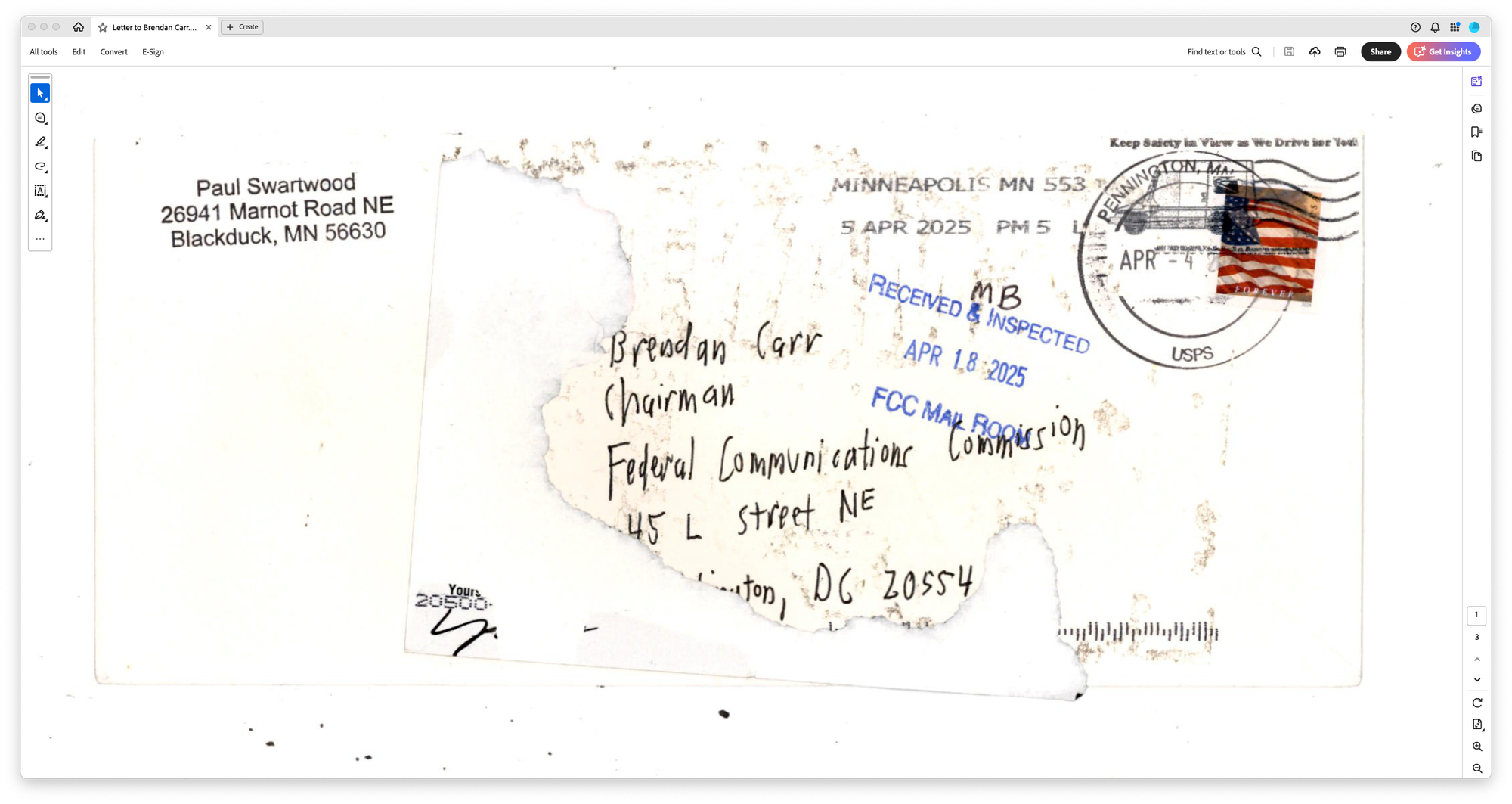
The FCC asked for guidance, and the public delivered — in volume, but there was a lot more noise than signal. With tens of thousands of disconnected thoughts flooding in, one hard truth became obvious: The Commission would need more than good intentions to turn this flood of feedback into usable policy insight. Somewhere beneath the noise is a deep reservoir of actionable ideas — but tapping into it would require structure, discipline, and a systematic way to extract the signal.
A Million Words
That’s where our work begins.
How Do You Analyze Nearly 900 Filings?
Rather than inventing new methods, I chose to align my approach with established best practices used to analyze open-ended survey data — a domain where data analysts face similar challenges of scale, subjectivity, and unstructured input.
Techniques I employed included:
- Response Coding: Categorizing open text into discrete, analyzable types, using both inductive and deductive methods.
- Natural Language Processing (NLP): Using computational tools to parse and extract meaning in large blocks of unstructured textual data.
- Thematic Grouping and Analysis: Identifying recurring ideas and grouping related thought units to surface key themes and trends.
This approach allowed me to:
- Maintain human judgment, where necessary (critical to stay on-track).
- Apply machine-assisted methods to manage scale efficiently.
- Build multi-dimensional views of the data — not just what people said, but how, why, and with what potential impact.
With this powerful toolkit, I was able to move well beyond counting how many comments mentioned a particular topic. I could now could analyze the depth, specificity, quality, and intensity of the ideas presented.
A Coding Methodology Emerges
The challenge was clear: I had to find a structure - a coding or classification framework - that could help bring order to the chaos. That framework wasn't immediately obvious. But, after careful, manual review of many filings, patterns began to emerge.
I found that I could break each submission into individual thought units — each focused on a single idea or statement. A shorter filing might consist of just a few thoughts. Others contained hundreds. Multiple thoughts were sometimes embedded in a single sentence. But, once broken out, I was able to classify each thought using a custom coding framework. I found that most thoughts fell into one of six categories:
- Observation offering helpful facts or context
- Challenge to progress and efficiency created by existing rules
- Driver pushing for change (like technology or market shifts)
- Proposal for regulatory change
- Reason expression of rationale for potential change
- Testimonial description of personal experience
In the example below, you can see how a short two-paragraph excerpt from a single submission breaks down into six separate thoughts of different types. Larger submissions would break down into tens or even hundreds of distinct thoughts!
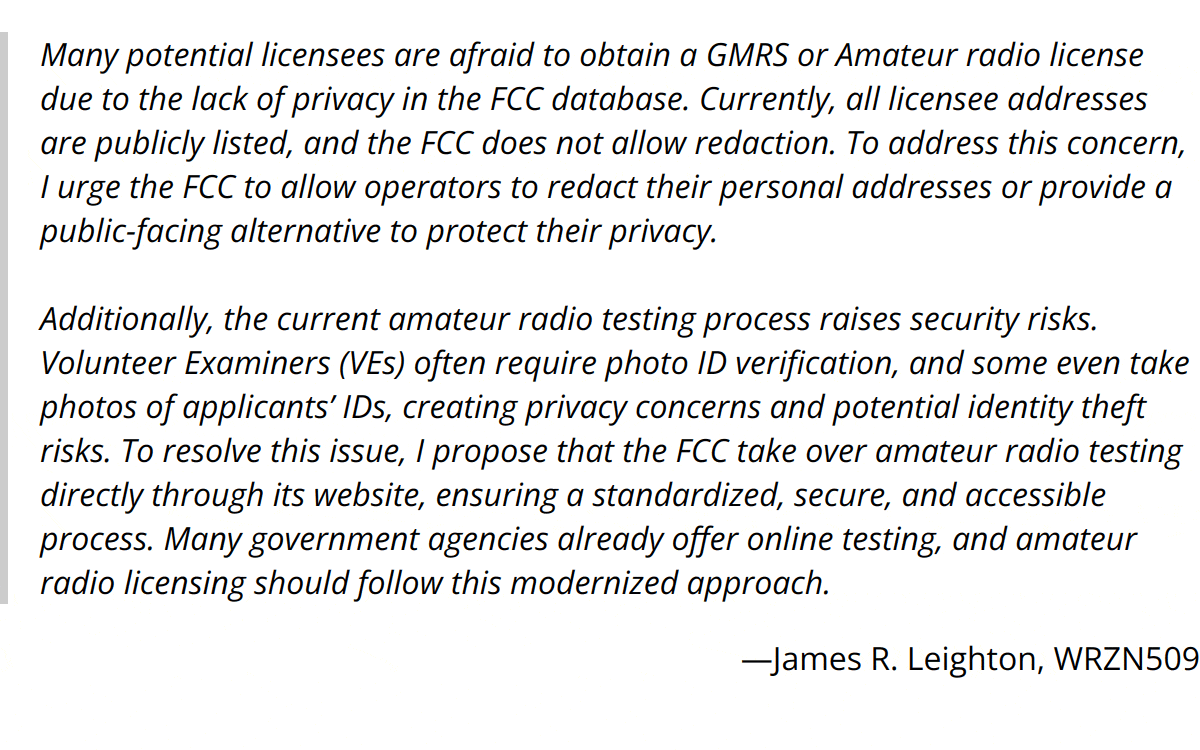
This approach allowed unstructured public feedback to be transformed into a fully-coded dataset that could be filtered, compared, and analyzed — a foundation not just for cataloging what was said, but for understanding what it all adds up to.
Profiling the Dataset: The Raw Scope
After classifying thousands of individual thought units extracted from nearly 900 filings, a clearer profile of the public input began to emerge. The amateur radio community had submitted about 463 of the 888 comments submitted overall.
Before delving into what was being said in all those filings, I took some time to look at who was commenting and the shape the various filings were taking in terms submission method, format and size.
Amateur Radio Commenters Showed Up Big, and Early.
Amateur Radio vs Non-Amateur Radio Submissions
Approximately 48% of all filings contained content directly relevant to amateur radio issues.
Licensed vs Unlicensed Amateur Radio Submissions
Among these amateur radio-related filings, a majority of at least 63% were submitted by readily-identifiable licensed amateur operators. The actual percent is likely to be significantly higher, as many individuals' likely status as licensees could not be definitively determined.
Filings from Different Entity Types
Comments come in from everyone — individuals and organizations. While the FCC does not make any special effort to identify the type of entity submitting comments, they do provide provide a simple field for "Name." Filers can enter anything in that field. We made a first-cut effort to distinguish between individuals and organizations.
Amateur Radio Commenter Profile
Note that, among the amateur radio community, the vast majority of comments were submitted by individuals (97%). ARDC, ARRL, ARSF and a few other organizations made up the few organizations filing from within the amateur radio community.
Non-Amateur Radio Commenter Profile
Conversely, many more non-amateur radio comments (50%) were filed by entities identifying as organizations. This is not a surprise, as 'non-amateur radio' covers many of the services under the FCC, including broadcasting, telecommunications and public service communications — all of which are represented by advocacy organizations and commercial companies.
Commenters Choose Either Standard or Express Filing Method
The FCC ECFS offers two primary methods for interested parties to forward their comments.
- Standard Filing is designed to accommodate large, detailed submissions. Filers complete a form and attach prepared documents. The portal makes it easy to upload multiple attachments of many types. Filers most commonly submit pdf and docx files.
- Express Filing helps those who wish only to submit relatively brief comments and to do so quickly. These filers complete the same form, but instead of attaching prepared documents, enter comments in a text field. This makes commenting easy for anyone who has internet access.
Amateur Radio File Types
Note that, among the amateur radio community, the most popular filing method was the quick-and-easy Express Filing method (59%).
Non-Amateur Radio File Types
Conversely, among filings identified as non-amateur radio and uncertain, comments were filed in document format (68.4%).
Words Matter: Counts Reveal Interesting Patterns
To get a sense for the nature of the submissions made across all filings, I ran a post-extraction word count on every submission.
The Non-Amateur Radio submissions — filed much more heavily by organizations — tend to be larger, more complex and more nuanced. The Amateur Radio-Related submissions, on the other hand, are more clear and direct.
Note the large clusters of submissions that have almost the same number of words — several on the Amateur Radio side and one big one on the Non-Amateur Radio side. What are those? They are coordinated cut-and-paste campaigns; all containing almost exactly the same message to the FCC.
Combinations of Words Form Thoughts
When we look deeply into every submission, the dataset explodes into tens of thousands of discrete thought units — an extraordinary volume of public input for a proceeding with such a compressed timeline.
Discrete Thoughts
What initially appeared chaotic was, in fact, rich: full of insights, challenges, hopes, frustrations, and concrete ideas.
After layering the Thought Type classification framework across the entire dataset, we see that - even within each thought type - we have a lot of data to work with.
Concerns and Opportunities Emerge
As I sorted and analyzed the thought units, powerful patterns emerged — not only among proposals but also within broader observations of the communications environment.
Challenges identified by respondents often mirrored the spirit of the FCC’s questions:
- Outdated regulations hamper technological innovation.
- Licensing structures fail to match modern realities.
- Insufficient enforcement allow degradation of the amateur radio experience.
Drivers highlighted external forces demanding regulatory rethinking:
- The rapid advancement of digital communications technologies.
- The growing interest in self-sufficiency and emergency communication resilience.
- Cultural shifts in how Americans expect to access and use communications services.
Reasons, Observations and Testimonials offered windows into the public's mindset:
- A widespread sense that amateur radio offers unique public benefits deserving of preservation.
- Concern that regulatory simplification could either empower or cripple community-driven communications, depending on how it is implemented.
Across all these categories, the quality of thought varied — but the presence of valuable insights was widespread and undeniable.
Proposals: Where the Rubber Meets the Road
We haven’t talked much yet about one of the key Thought Types - Proposals.
Proposals are the essence of what the FCC is asking for — clear recommendations for action. They are also the most diverse and complex category of thought in the dataset. Some propose specific rule changes. Others recommend that existing rules be preserved or enforced more rigorously. Some are highly technical; others are aspirational or broad. Their tone varies too — from urgent advocacy to thoughtful observation.
The FCC's public notice laid out a series of policy goals: reduce unnecessary regulation, eliminate obsolete rules, and remove barriers to innovation and investment. Some proposals aligned tightly with these goals. Others were motivated by entirely different concerns — like preserving public service, protecting spectrum integrity, or encouraging youth engagement.
Understanding Proposals offered by those filing comments on Docket 25-133 gives us the deepest insight into what our community feels should — and shouldn’t — change.
Our Focus: Amateur Radio Proposals
Given the size and complexity of the full dataset, I needed to zero in on a logical, disciplined starting point for deeper analysis. So, to focus my work, I made two key decisions:
- Focus on Amateur Radio-Related Filings:
- Amateur radio issues, while only a portion of the docket, generated the highest volume of filings.
- The amateur radio community showed up not only in volume, but in messaging about the future — and their concerns deserve to be heard clearly.
- Focus on Proposals First:
- Proposals represent direct recommendations for action — the raw material from which regulatory policy changes might realistically emerge.
- Other thought types (Challenges, Drivers, Reasons, Observations) provide important context, but proposals provide the basis for policy choices.
This decision to focus initially on amateur-radio-related proposals allows us to surface the most concrete, actionable insights early — while keeping the broader context in mind.
A Framework for Analyzing Proposals
Mining policy guidance from the 1,271 proposals offered by the amateur radio community would be no easy task. It, too, would require development of a framework and automation to discover the messages buried in the words.
As I began sifting through the proposals submitted by amateur radio stakeholders, I found that they varied significantly across several important dimensions:
- Do they they suggest an increase or decrease in regulatory structure (the existence or elimination of rules)?
- Do they they suggest an increase or decrease in regulatory constraints (the limitations or permissions mandated under any particular rule)?
- How specific are they (broad vs. detailed)?
- What is their tone and intensity?
- Are they aligned with the FCC's stated goals?
- What topic or area of regulation do they focus on?
These dimensions became the framework I used to categorize, ‘score’ and analyze Proposals.
Initial Findings
The noise began to recede. Meaningful signals were beginning to emerge.
Let's now explore what I found — starting with a high-level look at the respondents themselves, the types of thoughts they offered, and the key areas of concern that surfaced again and again within the amateur radio community.
Because hidden within the chaos, there is indeed a message.
Finding #1: Change the Current Regulatory Structure? A Strong No.
A significant portion of the amateur radio community expressed strong resistance to structural change in their comments to the FCC. Out of 1.249 amateur radio-related proposals analyzed, approximately 1,041 proposals 1031389040581 over 83% — signaled a clear desire to maintain the current regulatory framework.
Only 87 proposals were submitted suggesting a reduction in structure and regulation of the amateur radio service. In fact, 121 proposals suggested increasing structure or regulation to improve the service.
"The current structure of licensing and privileges is working well and should not be changed."
— Mark Kleinschmidt
Filing ID 10408531270290
"Amateur Radio has operated effectively under the existing structure for decades. Changes would only introduce confusion and risk diminishing participation."
— Roger Johnson
Filing ID 10406233375057
"I encourage the FCC to focus more resources on the enforcement of existing rules."
— Mathew Turner
Filing ID 1031389040581
These filings conveyed an overwhelmingly consistent theme: the underlying structure of amateur radio should remain untouched.
Finding #2: Changes to Regulatory Constraints? Bring It On!
When it comes to regulatory constraints — the specific limits imposed under existing rules — the amateur radio community shows a strong interest in gaining some relief. Of the 1,250 proposals we analyzed with valid constraint change scores, 521 advocated for more permissive regulation, suggesting reduced restrictions across many areas of on-the-air operation. This contrasts with just 80 proposals calling for tighter constraints, signaling very limited appetite for more stringent regulation. Notably, the largest group — 649 proposals — reflected a status quo stance, arguing that current constraints are appropriate and should be maintained. This reinforces the view that while many hams are eager to reduce friction, a substantial number believe the existing regulatory balance is about right.
What are some of the key areas where the community is looking for relief?
- Removing bandwidth limitations
- Allowing broader equipment use (e.g., FRS and CB gear)
- Permitting encryption on the amateur bands
- Remove or increase transmit power limitations
- Permit high-gain amplifiers on all bands
- Deregulating license renewal requirements
- Eliminating testing fees
"Allow the use of encryption for emergency communications to protect sensitive personal data."
— Mary Johnson
Filing ID 10413747519008
"Grant all licensed amateurs full access to all amateur bands, including HF - Remove outdated mode restrictions, allowing all operators to use voice, digital, and data modes freely."
— Maxwell Malone
Filing ID 10314296120503
"The FCC should allow hams to operate at higher power levels for digital modes."
— John Doe
Filing ID 10413910479235
The big picture message is that the amateur radio community would like to see unnecessary restrictions lifted so the maximum possible use can be made of the spectrum allocated to the service.
Finding #3: Hams Didn’t Hold Back — They Delivered Specific, Actionable Ideas
One striking result from our analysis of the comments is the unusually high number of proposals with very high specificity scores. Specificity, in this context, refers to how precisely a commenter articulates their proposal — offering detailed recommendations, naming affected rules or services, and sometimes describing implementation steps. We see proposals in the filings covering the full range of specificity.
Low Specificity
"What would be the minimum regulation(s) to govern amateur radio operation in the USA?"
— Ray David Congdon
Filing ID 10313036407829
High Specificity
"Section 97.29 should be deleted as obsolete."
— ARRL, The National Association for Amateur Radio
Filing ID 104122962905678
While many public comment dockets attract a high volume of general sentiments or vague suggestions, this one is different: a large portion of the amateur radio community brought forward concrete, well-thought-out solutions.
For the FCC, these high-specificity proposals are invaluable. They reduce ambiguity, reveal deep domain expertise, and offer a realistic starting point for policy formulation. Rather than sifting through abstract ideas, the Commission can evaluate real options. This level of clarity can accelerate regulatory outcomes and improve their quality. In contrast, low-specificity proposals, while still important for understanding values and concerns, offer less immediate utility in drafting rules or structuring impact analyses.
Finding #4: A Clear-Headed, Constructive Community Responds
One of the most telling signals from the comment data was the tone with which the amateur radio community presented its ideas.
Low-Intensity Proposals
"Please keep amateur radio frequencies as is."
— Nitin Philip
Filing ID 1040746880418
"The Novice and Advanced classes should come back."
— Richard Simble
Filing ID 1031996543398
High-Intensity Proposals
"I am pleading with the FCC to never given in to the thought of changing our current ham bands."
— Maxwell Malone
Filing ID 10314296120503
"MAINTAIN THE CURRENT LICENSING REQUIREMENTS"
— ARTHUR LAPON
Filing ID 1040232145371
We applied an intensity score to each proposal — a scale from 0 to 10 — to reflect how strongly the filer asserted their recommendation. A low score represents a tentative suggestion or mild preference. A high score indicates an urgent plea or emotionally charged demand. The middle represents a balanced but firm recommendation — thoughtful, serious, and actionable.
The vast majority of proposals landed squarely in this middle range. Nearly 70% of all amateur radio-related proposals had intensity scores clustered around 4 to 6, signaling a community that didn’t just show up to vent — it showed up to contribute. These were not idle opinions or speculative ideas. They were calmly but firmly stated proposals that reflected a desire to help regulators see practical paths forward.
And while there were certainly outliers — a few low-key musings and a few high-octane calls to action — the overall signal was loud and clear: This was a thoughtful, measured response from a technically literate public. In the world of open comment dockets, that’s a rare and valuable thing.
Alignments (and Misalignments) with the FCC's Goals
One striking observation: Despite the chaotic surface, many of the public’s concerns and proposals aligned directly with what the FCC said it was looking for.
- Calls for modernization clearly reflected the FCC’s desire to remove obsolete regulations.
- Identification of structural barriers echoed the FCC’s goal of spurring investment and innovation.
- Challenges articulated by respondents often pointed to outdated rule structures that no longer fit today’s marketplace and technological landscape.
However, not all feedback cleanly aligned with the FCC’s framing. Many respondents expressed anxieties that deregulation could move too far, creating instability or unintended consequences in critical communications services.
This tension — between deregulation for efficiency and safeguarding vital services — emerged as a major theme running through the data.
Top Areas Identified for Regulatory Reform
The amateur radio community response to the FCC's request for feedback clearly indicates a desire to focus on eight key areas:
So, we can see that the strongest areas of community interest and/or concern are:
- Maintaining access to and ability to take advantage of RF spectrum
- Licensing complexity and associated privileges
- Limitations on the ability to innovate
- Barriers to delivering communication in emergency and disaster situations
What's Next?
In future posts, we will dive deeper into the amateur radio-specific proposals, exploring:
- What changes hams are asking for,
- How their proposals cluster into major themes,
- Where the community is speaking in unison and where we have divided opinions,
- And what risks and opportunities these proposals may present for the strategic future of amateur radio and the broader communications ecosystem.
Because the signals hidden within the noise are too important to ignore.

